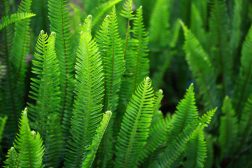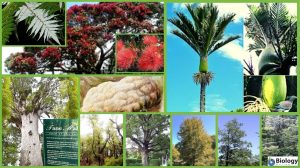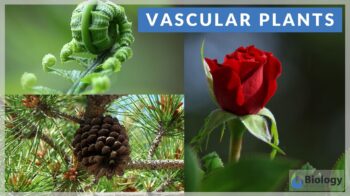
Vascular plants
n., singular: vascular plant
Plants possesseing well-developed system of conducting tissue to transport water, mineral salts and sugars
Table of Contents
Definition of Vascular plants
The term ‘vascular‘ is derived from the Latin word vāsculum, vās, meaning “a container and column”; the overall meaning of vascular is a small vessel. Compactly, vascular plants are those plants that contain vascular tissues such as xylem (important for transporting water) and phloem (essential for transporting minerals and nutrients).
What are vascular plants?
Vascular plants are also called tracheophytes. The term Tracheophyta is derived from the Greek word trachea (meaning a duct–a vessel in plants). The vascular plants are highly ordered, and land plants, including flowering vascular plants and ferns.
The vascular plants are well-developed and advance plants that include ferns, seed plants, angiosperms, and gymnosperms. The vascular plants have vascular tissues, including xylem and phloem for conducting water and integrating food, respectively.
To understand what vascular plants are, the authors and researchers have a different mindset but the same perspective. In other words, all the definitions of vascular plants contain two main aspects; the presence of xylem and phloem, and all the vascular plants are seed plants. However, for further understanding, see the various biological definitions below:
- The vascular plant contains xylem and phloem known as vascular tissues, for instance, conifers, flowering plants, and ferns.
- The vascular plants include all the seed-containing plants, angiosperms (flowering plants), gymnosperms, and the pteridophytes (lycophytes, horsetails, and ferns).
- Many vascular plants are land plants. The vascular plants include a wide range of plants from all the angiosperms, gymnosperms, and other pteridophytes. These groups are scientifically named Tracheophyta, equisetopsida, and tracheobionta. The term eutracheophyte is used for all other types of vascular plants.
- Vascular plants are advanced plants with a transporting function that occurred through xylem and phloem. The glucose (produced during photosynthesis), gases, water, minerals, and nutrients are circulated throughout the plant.
- Vascular plants are eukaryotes. They are distinguished from prokaryotes by having cells with a nucleus and other membrane-bound cellular structures.
- Vascular plants are also known as tube plants (tracheophytes). The presence of vascular tissues such as xylem (tube-like) and phloem ( tubular cells) plays a role in distributing food and water to the plant cells. Other ordinary characteristics include stems, leaves, and roots that hold the plant and provide support.
Vascular Plants vs Non-vascular Plants
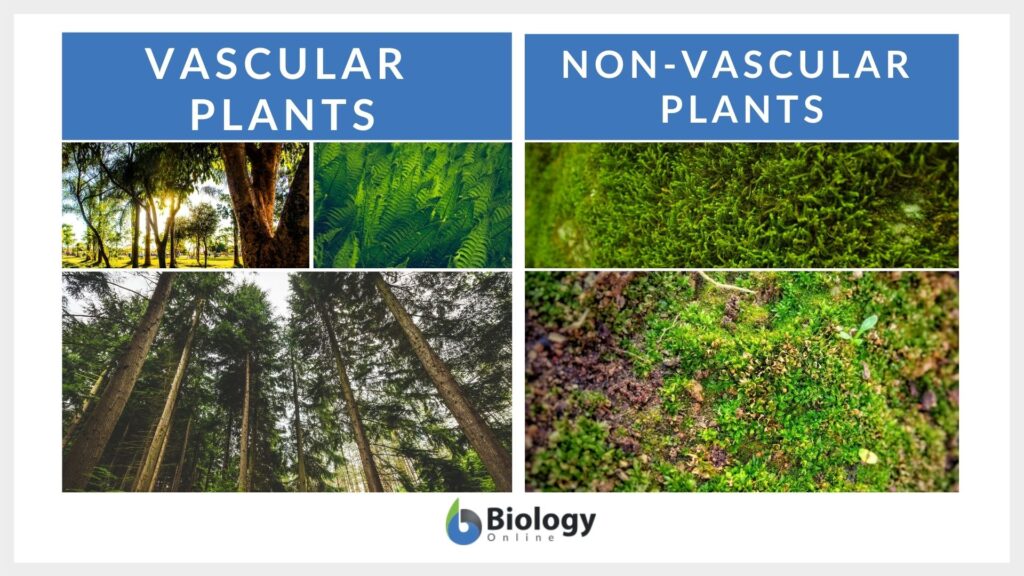
Despite common characteristics such as leaves and stem, both plants are highly differentiated based on the complex vascular system and other side characteristics. However, an easy way to understand vascular and non-vascular plants’ differences is to distinguish based on characteristics. Thus, look for several characteristics described below to see how both plants get differs from one another;
Vascular tissues
As the name describes, the non-vascular plants do not have vascular tissues (xylem and phloem). The conduction or transportation of food and water occurs through vascular tissues, showing that non-vascular plants are smaller than vascular plants, which require transporting of products throughout the plant body.
Habitat
Non-vascular plants live in damp, shady, and moist environments where water concentration is higher than land. These plants live in water-containing places to complete their life cycles. Due to the lack of vascular tissues, these plants can not regulate the water tendency within the cells and tissues and cannot withstand water deficiency (Poikilohydric). However, in several cases, they can tolerate dehydration and maintain without further damaging the tissues.
Where do vascular plants grow? The vascular plants are homoiohydric–meaning they can regulate water concentration within the cells and tissues. Thus, vascular plants are found in different habitats. Nevertheless, they cannot bear desiccation and would die due to water deficiency.
Anatomical structures
Further main characteristics for comparing vascular and non-vascular plants include anatomical structures such as leaves, roots, and stems. The anatomical structures in non-vascular plants are quite simple and have less complicated cell arrangements.
Leaves
The leafy structures differ in both plants, such that the arrangement of cells in the leaves (true sporophyte leaves–that produce spores) of vascular plants is more complicated than nonvascular plants. The non-vascular plants have leaf-like structures and are not through leaves but performing photosynthesis with a small number of chlorophyll pigments. The photosynthetic products (glucose) are only transported to near cells. However, vascular plants can transport their photosynthetic products to faraway cells and tissues.
Roots
Mostly non-vascular plants do not possess roots; instead, they contain rhizoids that act as roots (only providing support to the plant). However, the function of roots in vascular plants is to provide support and the absorption of water. Therefore, the vascular plants are more firm and are called land plants. On the other hand, non-vascular plants are found in damp places that do not require roots for soaking up water.
Stems
The non-vascular plants do not possess true stems as compared to vascular plants. The stem of a vascular plant is multilayered, consisting of a layer of vascular tissues (that provide support and transport food and water) is present in the innermost area surrounded by a parenchyma layer. Moreover, in woody plants, the outer layer comprises non-living or dead tissues called ‘bark.’
Reproduction and life cycle
In both plants, the reproduction may be by sexual or asexual. There is an alternation of generation: sporophyte (diploid) and gametophyte (haploid) phases. Nevertheless, the prominent form in vascular plants is their sporophyte whereas, in non-vascular plants, it is their gametophyte form.
| Table 1: Difference between Vascular Plants and Non-Vascular Plants | |
|---|---|
| Vascular Plants | Non-Vascular Plants |
| With vascular tissues (xylem and phloem) | Lacking in vascular tissues |
| Homoiohydric (capable of regulating water concentration) | Poikilohydric (lack mechanism against dessication) |
| Possess true leaves, roots, and stems | Lacking in true leaves, roots, and stems |
| Prominent (visible form) is the sporophyte | Prominent (visible form) is the gametophyte |
| More diverse | Less diverse |
| Inhabit diverse habitats | Habitats are mostly damp, swampy places |
| Examples: ferns, angiosperms, gymnosperms | Examples: mosses, liverworts, hornworts |
Characteristics of Vascular Plants
The characteristics of vascular plants depend upon their structures; however, the main character present in the vascular plant is the presence of vascular tissues in the plants. The other common characteristics or features of the vascular plants are as follows:
- As mentioned above, the vascular plants contain vascular tissues and consist of the vascular bundle (xylem and phloem). These specialized structures lead to the increased size of vascular plants.
- The reproduction involves the alternation of generations with sporophyte (diploid 2n that produces spores) as the generation face and gametophyte (haploid 1n that produces gametes or sex cells).
- Nearly all the vascular plants consist of true leaves, stems, roots; however, some vascular plants might have reduced traits.
Structure of a Vascular Plant
The vascular plant’s internal structure is well organized, and the arrangement of cells is differentiated compared to non-vascular plants with congested structures. Different species of vascular plants have unique, differentiated patterns of vascular tissues.
Moreover, the xylem transports the water, absorbed from the roots to the whole plant body, and is made up of lignin (structural protein) and dead cells. The absorption of water into tissues occurs through the pressure exerted on water from different directions. Further, the water flows upward through the xylem. The leaves then used the water for transpirational purposes. The small opening in the leaves called stomata evaporates the water out of the plant. This transpirational process further pulls the water in the xylem. Another factor that pulls water upward is the presence of cohesion and adhesion as shown in the figure;
Furthermore, the phloem, responsible for extracting the energy from the sunlight and converting it into chemical energy to form glucose, is made up of living cells (partially). These cells help in the transportation of glucose through transport proteins present in the cell membranes. Both structures, xylem, and phloem are interlinked, helping dilute the glucose and transporting it throughout the plant body.
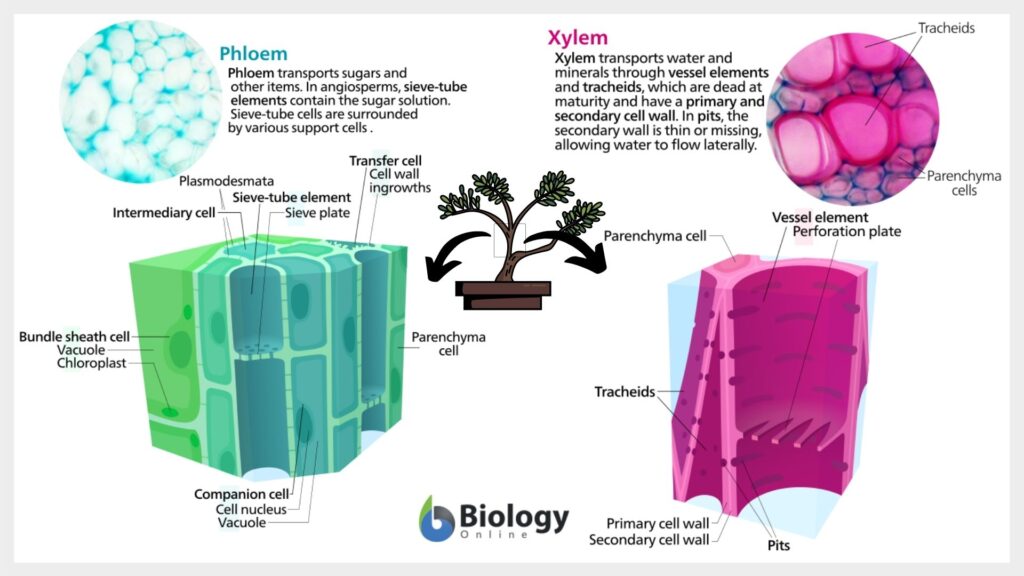
Vascular Plant Lifecycle
Before going in-depth about vascular plants’ life cycle, understand the following terms with their meaning to get a better insight into the topic.
- Gametophytes: Are those plants that produce gametes through mitosis to produce a zygote.
- Sporophytes: Are those plants that produce spores through meiosis to produce gametophytes further.
- Haploid (n): The haploid phase is highlighted by the single set of chromosomes for each cell from only one parent.
- Diploid (2n): The diploid phase is highlighted by the two sets of chromosomes for each cell from each parent.
Steps in vascular plants life cycle
The vascular plants reproduce through a process known as alternation of generations, which involves a life cycle from the haploid phase to the diploid phase and vice versa. The period of each phase during the life cycle depends on the type of vascular plant.
The dominating phase can either be haploid or diploid from algae, mosses to ferns, and seed plants. In some cases, both phases can be dominant together, for instance, several algae. While studying the vascular plant life cycle, the diploid phase is considered as the sporophyte and the haploid phase as the gametophyte.
All the plants and animals have two highlighted reproductive processes called fertilization and meiosis. The vascular life cycle begins when fertilization occurs. Fertilization is accompanied by the combination of gametes (haploid, n) to produce a zygote (diploid, 2n). Furthermore, meiosis (a reduction process) involves the division of the zygote (diploid nucleus).
The four haploid nuclei are formed through two divisions of the nucleus. Eventually, each haploid nucleus is surrounded by the cytoplasm and the cell wall, forming four haploid (n) spores. However, spores of some other plants undergo mitotic division to develop a gametophyte. Whereas the spores of vascular plants further developed into gametophytes (n) that form 1n gametes or sex cells.
Lastly, mitosis results in the growth of vascular plants. The mitosis process involves producing new cells by the division of either haploid or diploid nucleus and cytoplasm separation. The results of mitotic divisions include the two cells with the same chromosome as the parent cell. Further, the growth and development of zygotes from embryo to adult plants are facilitated by mitosis.
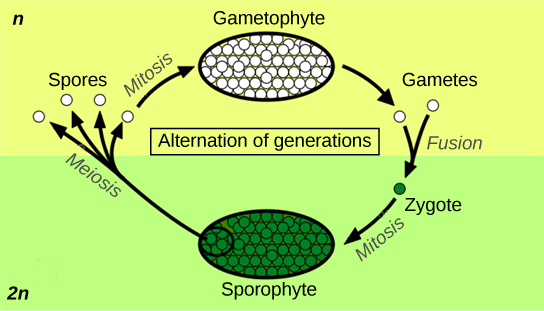
Classification of Vascular Plants
Back in centuries, different taxonomists aimed to classify organisms in groups (taxonomy). They identified the differences ad characteristics and grouped them. Similarly, the plants, constituting the largest Kingdom with a wide range of plants from lower to high ordered plants, were classified.
Carl Linnaeus has a more dominant place in the organisms’ classification as he proposed grouping of the organism in kingdoms, orders, a genus name, and binomial name to each organism. Aristotle’s complexity-based classification methods and Linnaean methods of classification led to the scientific approach to organizing plants and other organisms into different groups. The kingdom Plantae was divided into two main subgroups known as vascular plants and non-vascular plants.
The classification of plants or any other organism is a continuous process going on for centuries. Thus, botanical nomenclature international rules constitute revisions for plant classification based on several factors such as gymnosperms (Penhallow and others) that do not show characteristics up to international standards. However, the recently revised classification pattern of plants classification consists of the following divisions and sub-division:
(1) Division Thallophta
(2) Division Embryophyta (Archegoniatae)
Division Thallophta consists of those plants (e.g. lichens, algae, and fungi ) that have spores mode of reproduction (meaning they reproduce through various kinds of spores, gametes, and some cases with both). Moreover, these plants either have no or less differentiated vegetative organs (multicellular or unicellular).
In Division Embryophyta, the reproduction mode in these plants is oogamy (meaning a form of sexual reproduction in which female gamete is larger and often non-motile compared to male gametes). This reproduction mode is accompanied by the formation of an egg that develops into a zygote and then embryo to grown adult plant (alternation of generations). These plants have true leaves, stems, roots, and flowers (vascular plants).
Subdivision Tracheophyta (Vasculares)
Tracheophytes are vascular plants with stem, leaf, roots, and vascular bundles (xylem and phloem). The sporophytes live an independent life and eventually reduces to obliteration. They are divided into the following types:
- Pteridophyta
- Angiosperms
- Gymnosperms
Pteridophytes
The pteridophytes consist of around 1200 species of ferns and non-flowering plants. These plants are seedless plants and incapable of transferring the genetic material (DNA) to their offspring using fruits, seeds, and cones. However, these plants produce spores known as sporophylls. The leaves of pteridophytes contain spores on the underside. These spores can cover long distances due to a flexible structure that throws sporangia spores (structure containing spores). Pteridophytes’ anatomical structure is diversified with a wide range of characteristics such as fronds called fronds (these leaves remained coiled until they get matured). The stems are called rhizomes (horizontal) and standard roots with a vascular system for transporting water and food. These pteridophytes’ habitat includes terrestrial, aquatic, cold, and humid areas with preferences in tropical regions.
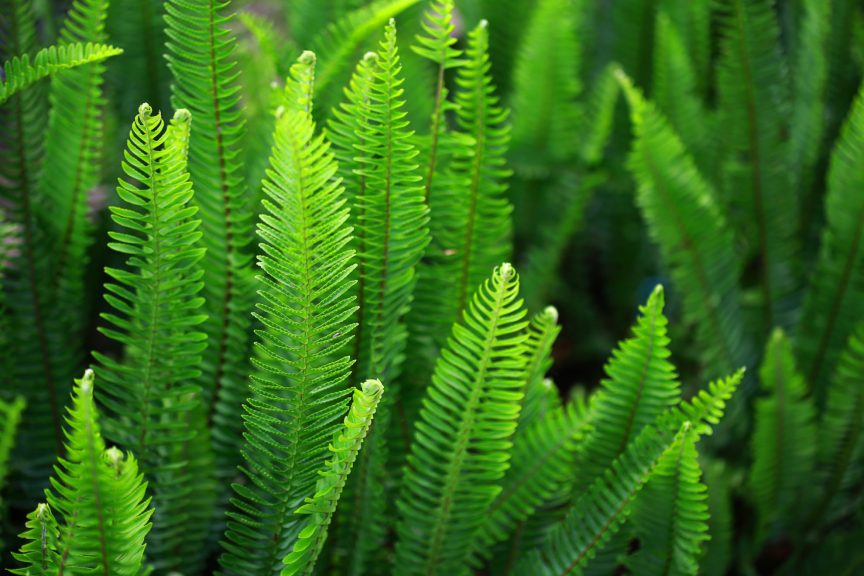
Angiosperm
The most diversified phylum is Angiosperms that contains 260,000 flowering vascular plant species. The plants included in phylum angiosperms are shrubs, bulbs, parasitic plants (epiphytes), trees, herbs, and other plants living in freshwater and marine habitats. The popular and largest families of the respective phylum include the family of orchids (Orchidaceae), legumes (Fabaceae), and daisies (Asteraceae).
Are flowering plants vascular? Yes! Apart from the presence of a vascular system in these plants, other characteristics shared by members of this group are as follows:
- Presence of seeds (in the carpel of the flower or fruit).
- Formation of endosperm (a nutritive tissue) through double fertilization.
- Presence of pollen sacs in the male reproductive tissues
- Moreover, an interesting fact about magnoliid (the oldest group of angiospermous plants) is that they were the first flowering plants to be considered as the foundation of giving rise to dicots and monocots.
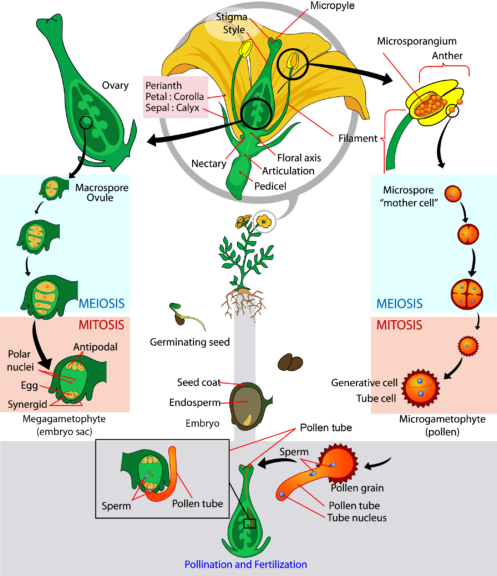
Gymnosperms
The phylum gymnosperms differ from other phyla of plants sure to the presence of tall, thick, and old plants (living). These plants are found and widely distributed throughout the world and are more abundant in Arctic and Temperate regions. These plants are hemlocks, firs, and pines with similar characteristics such as needle-like leaves and big wood stems. The seeds of these plants are naked, meaning that any flower or fruit does not enclose them. Instead, they possess cones, also called a strobilus, for reproduction purposes. These plants produce two types of cones to distinguish male and female cones with a difference of size–the female cones are larger than male cones.

Evolutionary History of Vascular Plants
The vascular plants have an ancient history of about 420 million years ago. It can be stated that these plants probably developed from moss-like or bryophytes ancestors, but in their life cycle, there is a dominant phase of diploid sporophyte generation; as time passed, they develop into the most advanced plants, and nowadays we find them with a more developed vascular system in these plants.
Vascular plants evolved true roots that were well modified as compared to rhizoids. These roots absorb more water, salts, and minerals from the soil. These roots keep plants anchor and secure into the soil. So plants can grow larger without tumbling. The stems of Vascular plants are well developed and have vascular tissues and lignin. This lignin gives stiffness to the plant, and due to the latter stiffness, the plants can grow high above the ground to get more air and light, which will help in photosynthesis. The vascular tissues in plants keep the water, and food supply continues in the plant body. Thus, the plants remain hydrated without getting dry out in the air.
The leaves of vascular plants are also well developed, broader, and larger. These structures allow leaves to experience more sunlight and increased photosynthetic processes. Due to a vascular system in plants and other adaptions, these vascular plants are better than mine vascular plants as they can grow tall and take the advantage of sunlight high up in the air. Moreover, the early vascular plants were the pioneers of photosynthesis into the air. In contrast, the bryophytes were the pioneers of photosynthesis on the land before vascular plants’ evolution.
Ecological Importance of Vascular Plants
Plants, either vascular or non-vascular, are a way to a better environment and important for different living organisms. However, vascular plants are widely spread and provide several benefits to creatures, including birds, animals, and humans.
A. Benefits of seedless vascular plants
Seedless vascular plants are beneficial in the ecosystem in providing food resources to animals and humans. Below are the benefits provided by the seedless vascular plants with respect to their phylum:
(1) Lycophyta
Phylum Lycophyta constitutes 1000 species, including club mosses, spike mosses, fern-like plants (Lycopodiums and Selagineums), and quillworts. These plants are relatively small and found in tropical areas with a wide range of habitats. Only one kind of spore is produced by these plants that grow into a gametophyte (bisexual). The fossils of these plants become the component of coal and prevent erosion.
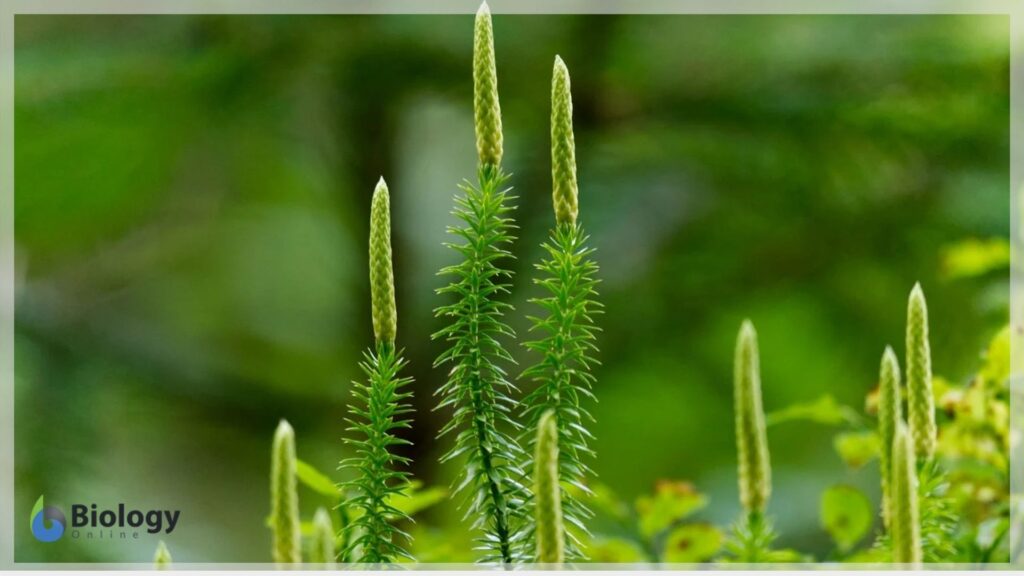
(2) Sphenophyta (horsetails)
The phylum only includes a single genus named equisetum. These plants are found near water with jointed stems and leaves in whorls. These plants produce spores in strobili (formed on fertile shoots) with photosynthetic gametophytes.
The stems of such plants contain silica that helps in washing or cleaning of pots, pans, and scoring.
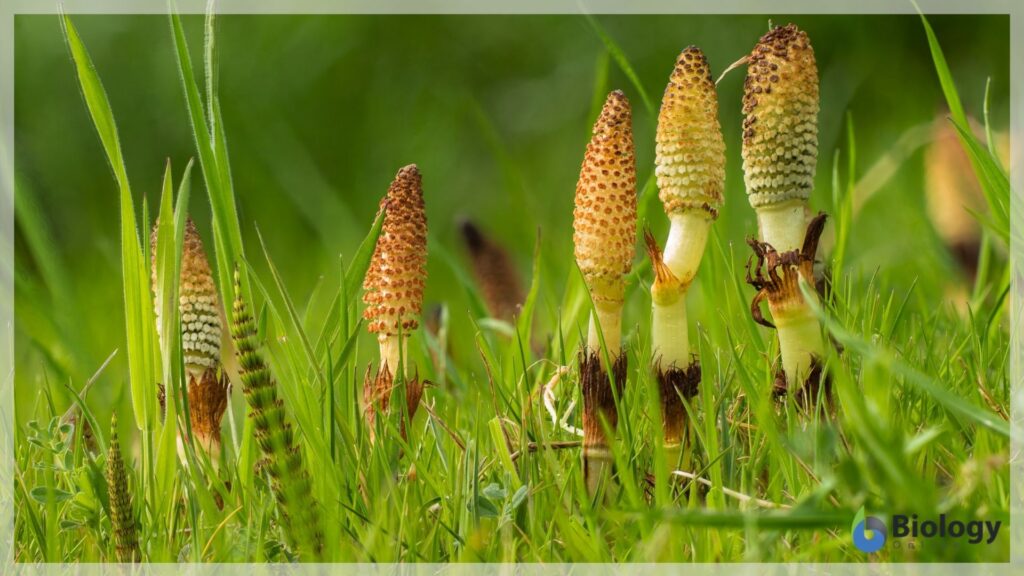
(3) Pteridophyta (ferns)
A wide seedless vascular plant phylum Pteridophyta that consists of 15000 species. These plants are common and abundant throughout the world. The ferns are homosporous with photosynthetic gametophytes. Moreover, ecologically, the ferns are considered to provide several benefits:
- Weathering of rocks.
- Reduction in erosion (due to rhizomes spreading in the soil).
- Prepares the top layer of the soil.
- Houses nitrogen-fixing cyanobacteria to provide the nutrient for aquatic life (water ferns).
- The tendency to absorb toxins from the soil.
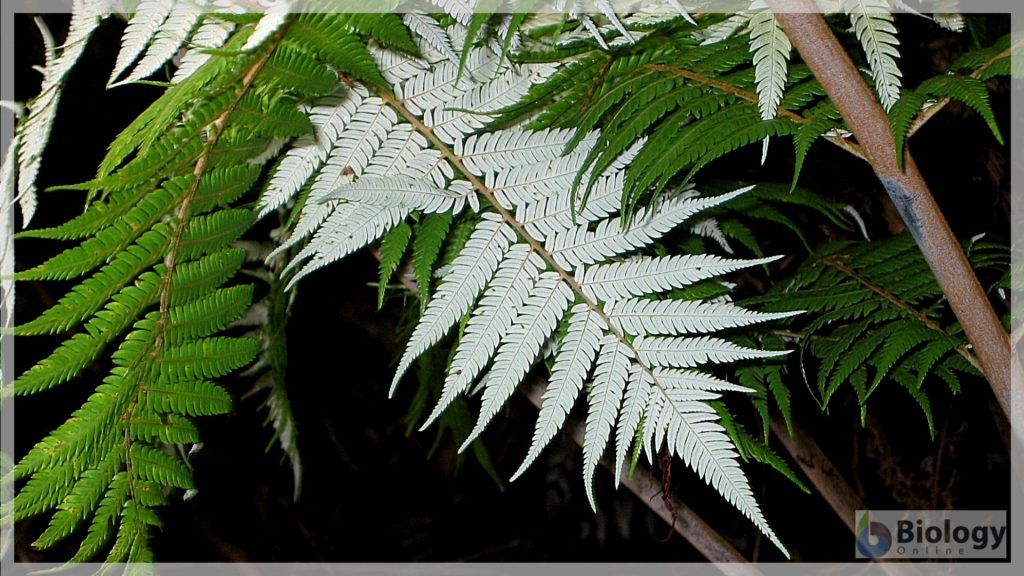
B. Benefits of vascular seed plants
The vascular plants have two types of seed plants, including gymnosperms and angiosperms. In the previous section, their characteristics have been defined, and the current section contains the ecological benefits of seed plants.
(1) Angiosperms
- The terrestrial food chains’ basis starts from the angiosperms because they convert solar energy into chemical energy and glucose through photosynthesis; thus, they are primary producers.
- Angiosperms are the sources of food both for animals and humans. Fruits, vegetables, nuts, and cereal grains are types of food that angiosperms produce.
- Angiosperms impact the ecology by keeping the environment clean, increase rainfall in forest areas. They protect soil from erosion.
- Angiosperms can help decrease global warming.

(2) Gymnosperms
- Ecologically, the conifers get an advantage over broadleaf plants. The needle-like leaves of conifers allow continuous photosynthesis during winters and do not require more energy to produce a new yield of leaves every year.
- Cycads seeds are used for medicinal purposes such as hypertension, and the roots of cycads are used for treating rheumatic pain and cold.
- The ginkgo plant is used for medicinal purposes in controlling and curing asthma, coughs, urinary and digestive problems.

Economic Importance of Vascular Plants
Vascular plants have been found to provide a bundle of benefits to humans for economic grounds.
Seedless vascular plants
- The leaves or fronds of ferns are attractive and beautiful, making the plant a more favorite ornamental plant. These plants can grow and develop in low light and are used for decorating homes.
- Some ferns such as Fiddlehead, Polypodium, and Licorice fern are used as food and side dishes, popular among native Americans, France tribes, and Pacific Northwest coastal tribes. The rhizomes of ferns are sweet. Moreover, native Americans use the fern for curing sore throat.
- Another economic benefit of a vascular plant that impacted human life is coal deposits throughout the world due to the plants’ burring in the Carboniferous period. Thus, providing humans an ultimate source of energy (keep in mind that excessive use of coal is one reason for global warming).
Angiosperms
- The angiosperms are abundant and produce flowers that enhance the environment due to their beauty. They are a good source of medicine, food, clothing fiber, and wood.
- These angiosperms are economically beneficial for humans, such as cotton crops, fruits crops (mango, orange, etc.) that boost the country’s economy.
- The agricultural countries are based on crops, such as wheat, rice, maize, cereals, and vice-versa that keep the country in progress and trade all these crops, the country, and foreign currency, leading to the increase in economic levels.
- Many angiosperms are sources of drugs used to cure different diseases by producing chemicals that are significant for medicinal purposes.
Gymnosperms
- Some species of gymnosperms are edible and thus a source of food. Other gymnosperms are used for making medicine, as ornaments, and other industrial products such as gum, tannins, and vice versa.
- The seeds of gymnosperms are a source of oil.
Conservation of Vascular Plants
Where vascular plants help humans in a wide range of areas from ecological to economic grounds, humans’ responsibility increases to conserve the vascular plants. Several research pieces have been made to increase vascular plants’ conservation based on the respective research results.
One research conducted in 2020, under the title “Conservation of vascular plant diversity in an agricultural and industrial region in the Chihuahuan Desert, Mexico,” shows several specifications regarding the conservation of vascular plants.
The Chihuahuan Desert is one of the places with high biodiversity, especially vascular plants. An area within the desert known as Comarca Lagunera is under human-centered activities.
The changes due to anthropocentric activities head lead to a decrease in biodiversity (including a wide variety of vascular plants).
Only 1174 species were found in the desert, with 35 species restricted to Comarca Lagunera limits. The research summary leads to acknowledging the right floral distribution can help identify areas with more biodiversity.
Moreover, different researches are conducted to identify the areas with biodiversity and focused on vascular flora. Other researches were focused on identifying the places for the conservation of vascular plants within urban areas. One of the research proposed that a better option was to introduce ecological lands to conserve vascular flora, which was more useful in protecting and conserving vascular plants.
Vascular Plants Examples
Several species or examples of vascular plants (that are popular and familiar) are mentioned below to see their adoptions in the respective habitat.
Seedless vascular plants
Plant evolution in the late Devonian period led to the improvement in leaves, root system, and introduction of the vascular system in plants. These evolution characteristics helped plants to increase incise and height. As evidence, most of the club mosses and horsetails were tall, around 30 meters, during the Carboniferous period.
Moreover, in seedless vascular plants, the dominant phase of the life cycle is the sporophyte, and for fertilization, a moist environment and water are still necessary. The significant seedless vascular plants are ferns, clubmosses, whisk ferns, and horsetails.
Adaptations of ferns
- Large and broad leaves.
- Branching roots.
- Habitats in moist and damp environments.
- Presence of vascular tissues.
Adaptations of club mosses
- Branched stems.
- Small leaves
- Vascular systems lead to more heights.
Adaptations of the whisk fern
- Not true fern with no roots and leaves.
- Photosynthesis occurs in a green stem.
- Yellow knob-like structures contain sporangia.
Adaptations of horsetails
- The stem contains knobs and joints.
- Whorls of leaves and branches.
- The needle-like leaves and most photosynthesis occur in the stem.
- Habitats in marshes and damp environments.
Angiosperms
Angiosperms are seed-producing flowering vascular plants. The seeds are enclosed in fruits. These plants are called flowering plants due to the key role of flowers in reproduction. The enclosure of seed for protection and nourishment purposes within the fruit is an adaptation of angiosperms. These characteristics distinguish the three examples of angiosperms:
- Fruits –including mango, cherries, apple, and others formed due to the reproduction occur within the ovary of a flower that develops into the fruit.
- Vegetables –including kale, broccoli, and lettuce that are collected before the development of flowers.
- Flowers –all the colorful and nicely fragmented flowers found in the earth are angiosperms. These flowers indicate the arrival of fruits.
- Grains –including wheat, rice, and others are also grassed flowering plants.
Gymnosperms
Gymnosperms and seed-producing vascular plants do not enclose the seeds in fruit or a flower; rather, its seeds remain opened in the air. Several examples of gymnosperms are;
- Conifers –found in different world areas and are cone-bearing trees and shrubs such as pines, redwoods, firs, cedars, and spruces.
- Cycads –can survive in dry environments, possess wood trunks, and these leaves grow directly from the stem. These plants are found abundantly in different regions of the world.
- Gingko –tall trees with fan-shaped leaves and strong, widely spread roots that hold the plant firmly. These plants are resistant to diseases, winds, insects, and snow damages.
Try to answer the quiz below to check what you have learned so far about vascular plants.
Reference
- González, A., & Morales. (2020). Conservation of vascular plant diversity in an agricultural and industrial region in the Chihuahuan Desert, Mexico. Global Ecology and Conservation, 22, e01002.
- Marcin, K., Dyderski., Dorota., & Andezej M. (2017). Ecological lands for conservation of vascular plant diversity in the urban environment. Urban Ecosystems, 20, 639–650.
- “Evolution of Plants – Biology Encyclopedia – cells, body, human, process, system, different, organisms, life, structure”. Accessed October 14, 2020.
- Abercrombie, Hickman & Johnson. 1966. A Dictionary of Biology. (Penguin Books)
- Cavalier-Smith, T. (1998), “A revised six-kingdom system of life” (PDF), Biological Reviews of the Cambridge Philosophical Society, 73 (3): 203–266, doi:10.1111
- Christenhusz, M. J. M. & Byng, J. W. (2016). “The number of known plants species in the world and its annual increase”. Phytotaxa. 261 (3): 201–217. doi:10.11646
©BiologyOnline. Content provided and moderated by BiologyOnline Editors.

